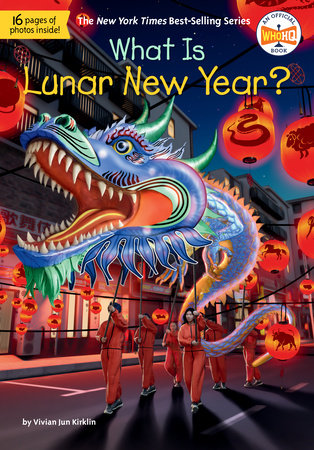At last, a material known to every crafter for its almost-supernatural tendency to spread everywhere gets its due. Barton opens by explaining what “iridescence” is, speculating about its visual attractiveness and pointing out the places it can be observed in nature, from feathers and mica to the elytra of beetles. He details early examples of its use in art and decoration before offering a history of its modern manufacture (initially known as mineral “flitter,” then “slivers” of plastic before companies like Glitterex gave it its current name) and some of the many uses to which it has been put, including cupcakes and mixtures with Ash Wednesday ashes to “signal the welcoming of LGBTQ+ worshippers.” Its downsides are also noted, such as the use of child labor to mine mica and the fact that the bulk of it is by definition a microplastic and contributes substantially to pollution. Closing with references to efforts to create biodegradable and sustainably produced alternative glitters, he urges readers to “shimmer more thoughtfully” and rounds up sources and resources for further enlightenment. Visual sparkle is added by Prabhat’s painted images of a racially diverse cast of mostly children investigating or celebrating their glittery world amid showers of brightly hued dots. A shining example of a seeming niche filler that turns out to have significant relevance for an astonishing range of issues and interests.
—Booklist, starred review
The whats, whys, and hows of glitter.
Barton began his successful writing career with a book about shining colors, The Day-Glo Brothers (2009). Here, he tackles another showy subject. In an engaging, conversational narrative, he explains why glitter sparkles, speculates on why humans like sparkly, shiny things, and looks back at historical uses. He describes glittery bits made from the wings of beetles in ancient Egypt and from mica in civilizations around the world. Barton also examines the etymology of glitter. (It was once called flitter.) Then he turns to modern glitter, made from plastics, touching on the manufacturing process as well as glitter’s small size (measurable in microns) and uses, with special attention to Mardi Gras. Barton explains why glitter clings so easily to anything it touches and unpacks environmental concerns about microplastics, which often end up in the ocean. He mentions the more recent innovation of biodegradable glitter and problems with mica mining. Throughout Prabhat’s lively digitally created art, three young people follow the investigation. On one spread, a dark-skinned child with Afro puffs peers at glitter through a microscope while a light-skinned child with long, dark brown hair uses tweezers, and a brown-skinned child gazes through a magnifying glass. There’s humor, too, mostly related to glitter’s clinginess. The author ends on a hopeful note, praising “the steps humans are taking to shimmer more thoughtfully.”
An intriguing, entertaining investigation sure to catch readers’ attention. (author’s and illustrator’s notes, further reading, selective bibliography)
—Kirkus Reviews
Barton explores glitter, a source of fascination (and frustration), diving into the science, history, and entrepreneurship that created the material we know today. He doesn’t shy away from the drawbacks, from everyday irritations to the serious environmental impacts of microplastics to the use of child labor in mining. But he also explores the joys of glitter, including why people have always been attracted to things that shine and sparkle. From the early days of using mica and beetle shells to create something shiny to new innovations intended to make glitter more ecologically friendly, Prabhat’s colorful, layered, collage-style digital illustrations capture its messy allure. Many spreads are flecked with small shapes, evoking glitter’s ubiquitous quality. Whether they love the stuff or loathe it, readers will find something here to pique their curiosity. Back matter includes an author’s note on Barton’s research process, an illustrator’s note, sources, and suggestions for further reading.
—The Horn Book
This nonfiction expedition into the history of glitter aims to, if not necessarily warm librarians up to it, at least help make plain its origins.
Barton approaches the twinkling topic from a multitude of angles. He writes about bioluminescence in the wild. He provides a brief bio of the inventors of “flitter,” its name before “glitter” was coined. And he informs readers about biodegradable and edible versions of an otherwise nearly indestructible plastic material. Pages are wordy, but text is clear and thoughtfully laid out amid Prabhat’s colorful, full-bleed illustrations. The facts are anchored by a diverse trio of children exploring the history of glitter, almost as if they’re on a time-traveling journey. Glitter isn’t going anywhere—literally, it’s never coming out of the carpet—so we might as well get to know it.
VERDICT Although niche, this is a super accessible and fun deep dive into a craft staple. Full of fun facts for every collection.
—School Library Journal
Strong opinions about glitter are common, but whether you love it or hate it, this book is a fascinating look at the history and science of all things sparkly! Readers will learn what iridescence is, how it works, and how human use of shimmery beetles in ancient Egypt and shiny mica in South African cave paintings led to the development of what we now know as glitter. There is a discussion of various applications for glitter, from crafts to cupcakes, as well as future glitter innovations to help make new types of sparkles that are not harmful to the earth. An author’s note, bibliography, and selected further reading suggestions round out this fun exploration of a very niche topic.
—Cybils Award, finalist review














